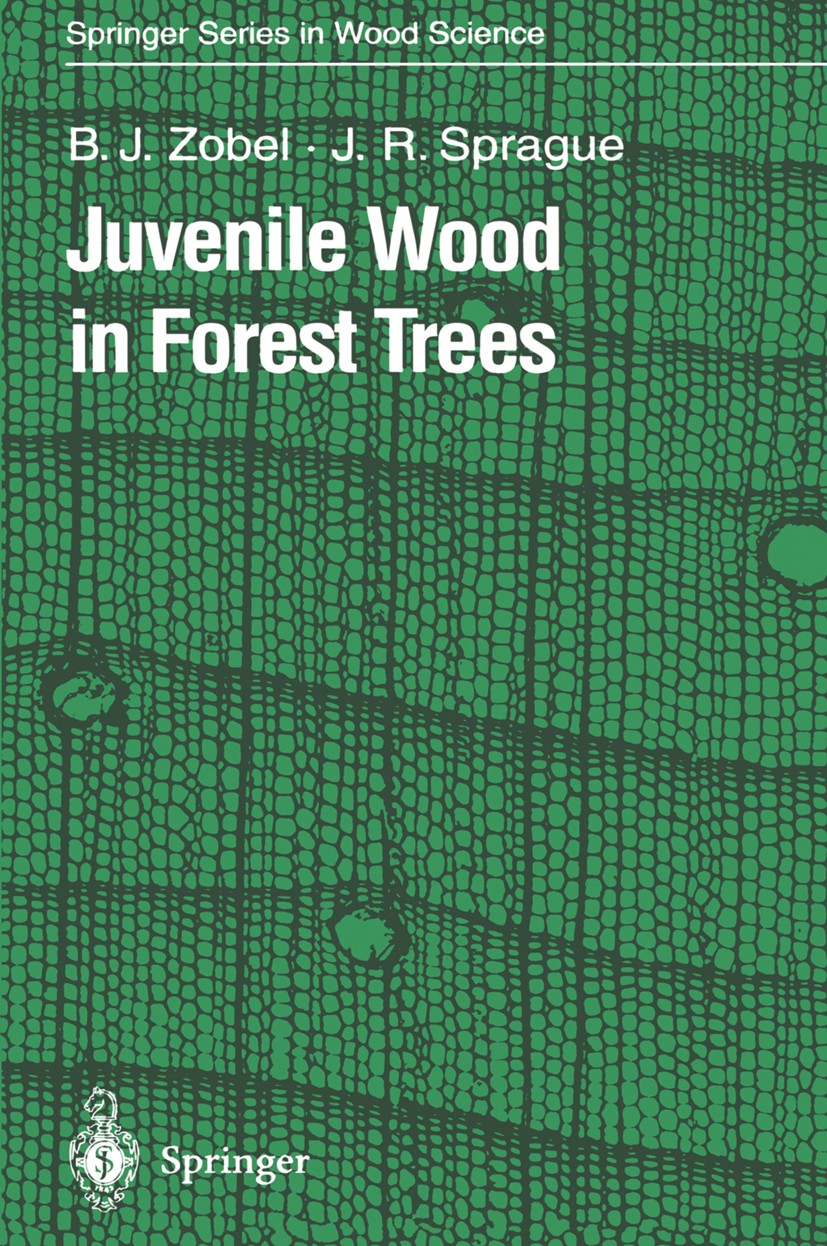| 书目名称 | Juvenile Wood in Forest Trees |
| 编辑 | Bruce J. Zobel,Jerry R. Sprague |
| 视频video | http://file.papertrans.cn/502/501825/501825.mp4 |
| 概述 | A summary of knowledge about juvenile wood - both scientific and applied.A good summary of each chapter is given.Simply and understandably presented |
| 丛书名称 | Springer Series in Wood Science |
| 图书封面 |  |
| 描述 | The trend in forestry is toward shorter rotations and more complete utiliza tion of trees. The reasons are: (1) financial pressures to obtain rapid returns on the forestry investment made possible by an earlier harvest; (2) enforced harvest of young plantations to maintain a continuing supply of cellulose for mills where wood shortages are experienced; (3) thinning young plantations, both because they were planted too densely initially and because thinning is done where long rotation quality trees are the forestry goal; (4) more intensive utilization is being done using tops and small diameter trees; and (5) there is interest in using young (juvenile) wood for special products because of its unique characteristics and the development of new technologies. The largest present-day source of conifer juvenile wood is from thinnings of plantations where millions of hectares of pine were planted too densely. Because of the better growth rate resulting from improved silviculture and good genetic stock, plantations will need to be thinned heavily. As a result of this trend, young wood makes up an increasingly larger proportion of the total conifer wood supply each year. Large amounts of ju |
| 出版日期 | Book 1998 |
| 关键词 | Baum, Entwicklung; Baum, Morphologie; Frühholz; Holz, Anatomie; Holz, Chemie; Holz, Dichte; Holz, von Jung |
| 版次 | 1 |
| doi | https://doi.org/10.1007/978-3-642-72126-7 |
| isbn_softcover | 978-3-642-72128-1 |
| isbn_ebook | 978-3-642-72126-7Series ISSN 1431-8563 |
| issn_series | 1431-8563 |
| copyright | Springer-Verlag Berlin Heidelberg 1998 |
 |Archiver|手机版|小黑屋|
派博传思国际
( 京公网安备110108008328)
GMT+8, 2025-11-11 17:58
|Archiver|手机版|小黑屋|
派博传思国际
( 京公网安备110108008328)
GMT+8, 2025-11-11 17:58


